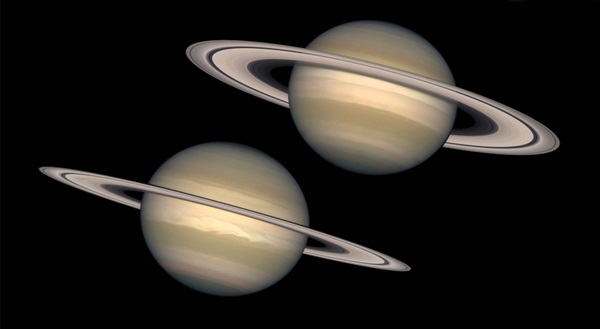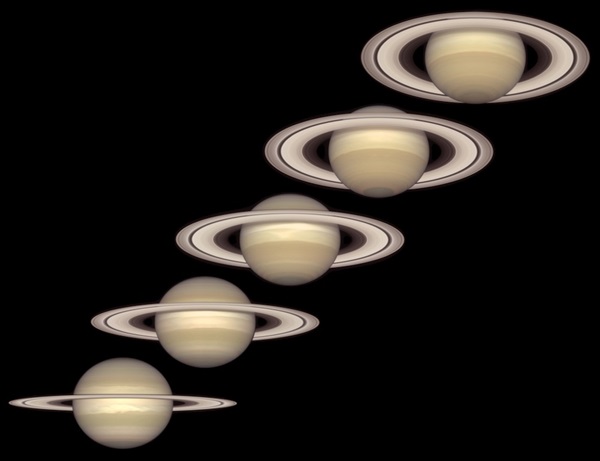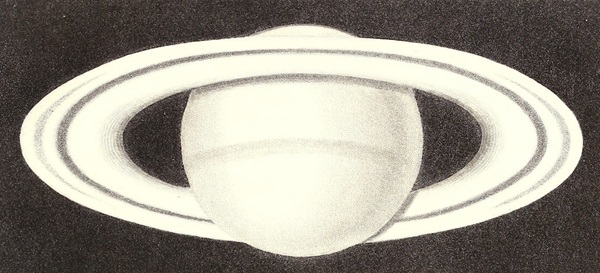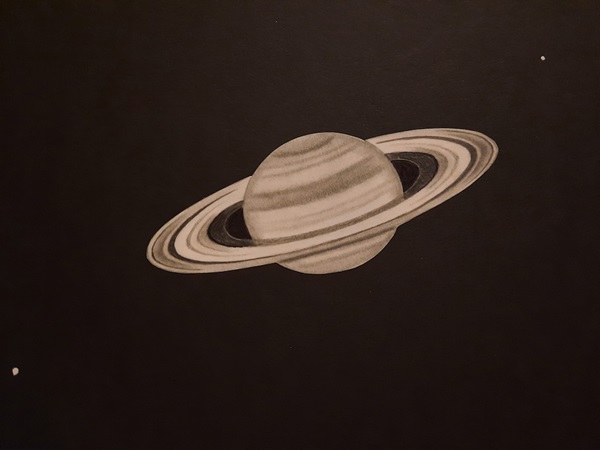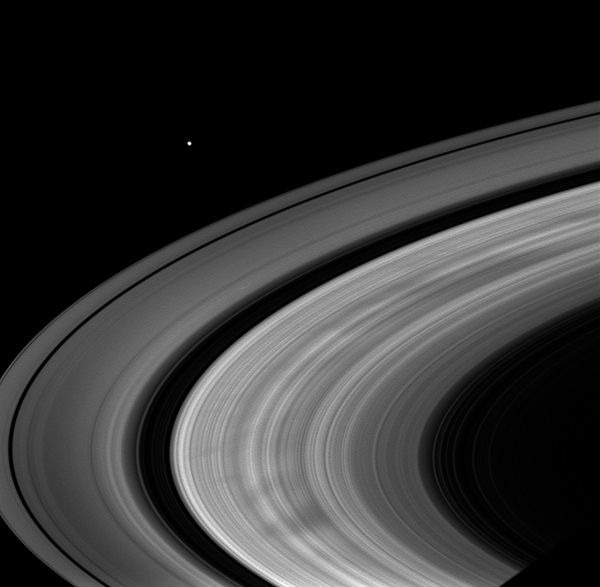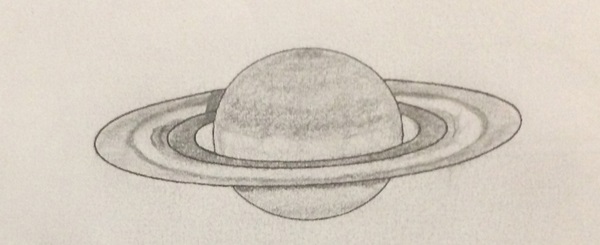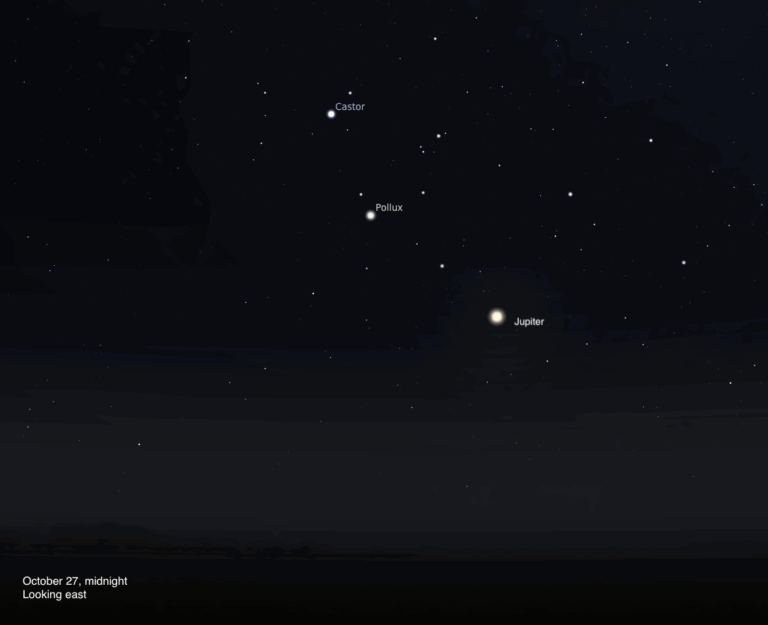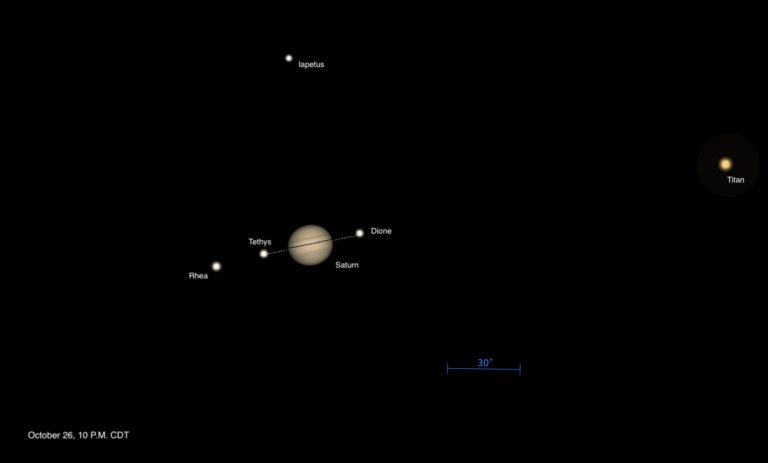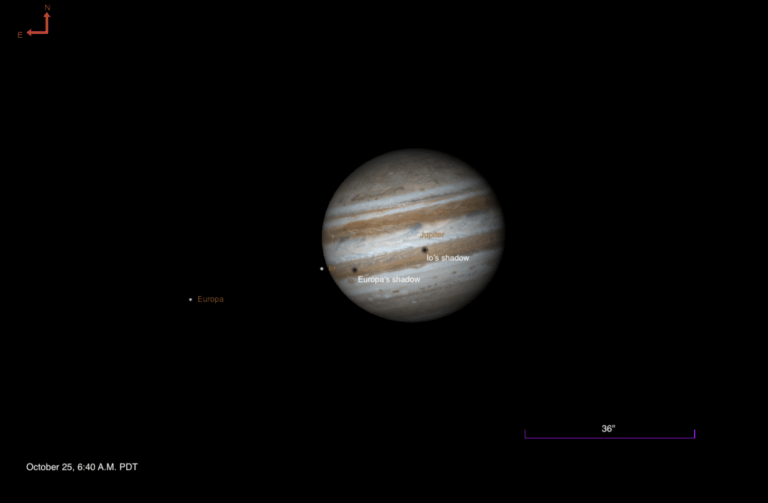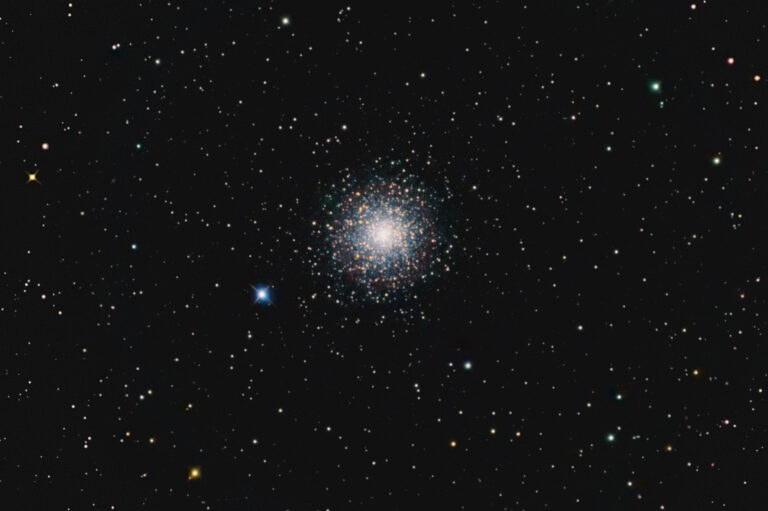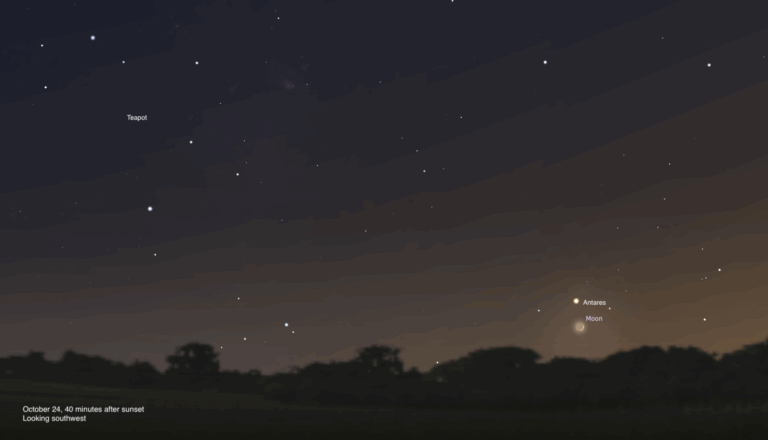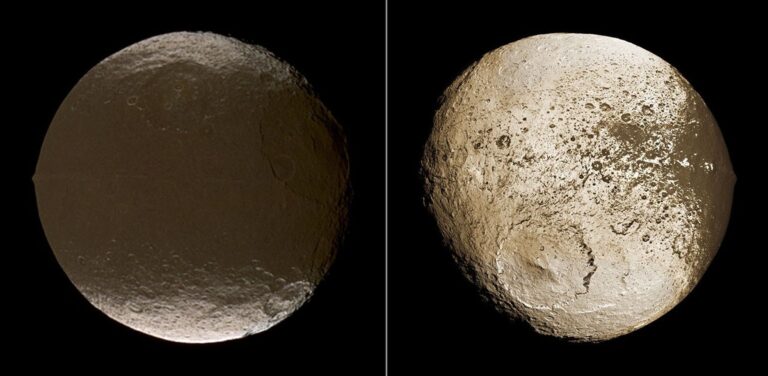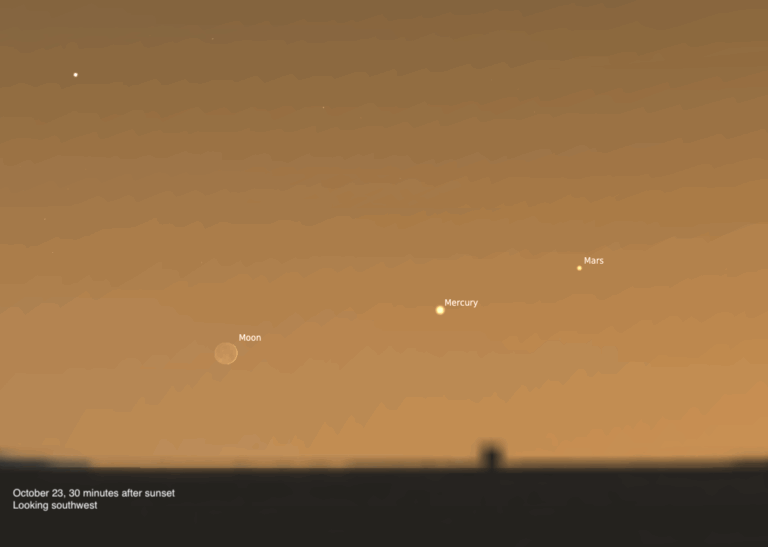Key Takeaways:
- Saturn reached opposition on August 14, 2022, presenting an optimal viewing opportunity of its northern rings, which are currently 14° open. This is the best viewing opportunity until 2027.
- The rings' visibility will gradually decrease, becoming nearly edge-on in 2025, limiting the observation of features like the Encke Gap and Minima in Ring A, and the Cassini Division.
- Observational targets include features within the A, B, and C rings, such as the Encke Gap and Minima, Cassini Division, and the possibility of observing transient ring spokes, best visible near the equinox.
- Saturn's atmosphere, while showing less detail than Jupiter's, exhibits features like the Equatorial Zone, belts, and potentially observable white spots, possibly linked to ring spoke formation.
Saturn, the ringed wonder, achieved opposition this year on Aug. 14 at 17h02m Universal Time (UT). With its rings currently 14° open, now is the perfect time to target the solar system’s showpiece gas giant. It will be another five years before Saturn’s rings are again open enough (13°) to fully reveal all their components.
Next year’s opposition (Aug. 27 at 8h20m UT) is also favorable, but the rings will open only 9° to our line of sight. That’s just narrow enough to limit the clarity of visual details, especially in the outermost ring, Ring A. This year’s opposition, then, marks the denouement of the northern face of Saturn’s rings. After this apparition, Saturn’s rings will gradually narrow until they turn edgewise in 2025; we will not see them open substantially again until 2027.
At opposition, Earth moves between Saturn and the Sun. With the ringed world rising as the Sun sets, this event marks when the planet is at its closest and brightest for the year. If you can’t make the actual date of opposition, don’t worry. For several nights leading up to and following that event, observers will still be able to view and image the finest details, not only in Saturn’s rings, but on the planet as well.
While Saturn virtually turns into “Super-Saturn” at opposition, the great gulf between it and Earth (nearly 824 million miles [1.33 billion kilometers], or 8.86 times the average Earth-Sun distance) causes it to shine modestly. At magnitude 0.3, Saturn will be about as bright as the star Procyon in Canis Minor. The world’s angular diameter is also demure at 18.8″, which is less than half the diameter of Jupiter’s disk during its opposition.
With a declination of –15.5° (in far eastern Capricornus, near the western border of Aquarius), this opposition favors the Southern Hemisphere, where observers will see the planet loom 60° above the horizon at its highest. From mid-northern latitudes, Saturn only climbs to half that altitude, making observations of it more susceptible to atmospheric turbulence.
Survey the rings
Saturn’s rings, as splendid as they appear in whole, require a careful eye to pick out fine details within. The illustration below shows its three main ring sections: Ring A (outermost), Ring B (middle), and Ring C (inner). Ring B is superior in brightness, followed by Ring A, and Ring C is the dimmest and most difficult of the trio to detect. Each of these sections contain subtle details, including ring divisions, variations in intensity and color, and many other curious aspects worthy of investigation.
Let’s look at each ring section individually, and I’ll describe some historical features that were regularly seen and imaged during last year’s opposition. Many of these features will likely be accessible again during this year’s apparition, with perhaps a few added bonuses. Note that as a general rule, viewing the features described in this article (unless otherwise noted) requires a quality telescope, eyepieces with magnifications of 250x or higher, and impeccable atmospheric seeing.
Wonders in the rings
At a glance, Ring A, the outermost of Saturn’s three main ring sections, appears like an ashen cap to brilliant Ring B. But a careful look with a magnifying power of roughly 100x or more will show the Cassini Division, a prominent dark gap (about 0.7″ wide) separating rings A and B. And this year marks the penultimate chance to glimpse two other popular features before the ring-plane crossing occurs: the Encke Minima and Encke Gap.
The Encke Minima are not a true ring division, but instead a low-contrast feature (a dimming) caused by longitudinal variations in the ring’s density or transparency. They appear as broad fuzzy lanes in the middle of Saturn’s A ring. German astronomer Franz Encke made the first definitive records of them beginning April 25, 1837. On that night, using a 9.6-inch refractor, he noted that the “outer ring is divided by a line parallel to the edges into two very close equal parts from both sides.” Today, they are the most viewed and imaged feature in Ring A through 4-inch and larger telescopes.
The Encke Gap, on the other hand, is one of Ring A’s most elusive visual challenges. This hyperfine thread of darkness (a true gap) in the extreme outer portion of Ring A lies less than one-fifth of the ring from its outer edge. Saturn’s walnut-shaped moon Pan is responsible for keeping the 200-mile-wide (320 km) gap open. In January 1888, on a night of exceptional seeing, American astronomer James Keeler discovered the gap through the Lick Observatory 36-inch refractor at high power.
Other observers had likely spied the Encke Minima and Encke Gap on earlier dates, but Encke and Keeler’s observations were the most definitive. Today, the Encke Gap is commonly seen and imaged through 10-inch and larger telescopes, though it has been viewed through smaller quality instruments at high power, as shown in the sketch on page 50 by David Graham of England.
Ring B, the brightest, densest, and most pronounced of Saturn’s rings, also displays the most texture, generally allowing observers to perceive plenty of detail. First impressions reveal that the ring gradually dims from a sandy white color in its outer portion, fading to a dusty beige color in its darker inner portion. Furthermore, as American astronomer Charles Wesley Tuttle described Oct. 20, 1851, the view through Harvard Observatory’s 15-inch Great Refractor at high power showed that Ring B was “minutely subdivided into a great number of narrow rings … not unlike a series of waves.”
This year’s opposition may also have a major surprise in store for us: Saturn’s spokes, which are mysterious streaks that cut across the rings. Astronomers think these spokes are made of micrometer-sized dust electrostatically held in place above the rings. They may be a seasonal phenomenon, appearing only during the low-angle lighting that occurs near equinox, namely when the rings are less than or equal to about 17° open. But no one knows for sure. Spokes have appeared and disappeared before, so the only way to catch them is to keep watch. As of early May, no spokes have been seen or imaged. But they could appear in time for opposition. It’s hard to say, as so little is known about these strange radial features. Note that if they do appear, they should be most prominent along the morning ansa (protruding “handle”) of Ring B.
A faint inner ring, or Ring C, has a milky transparency against the blackness of space. However, it appears as a dusky veil when seen against the globe of the planet, which is why it was known originally as the Crepe Ring. Astronomer George Phillips Bond of Harvard first suspected its “feebly illuminated” form Oct. 10, 1850. But he saw it “with full certainty” Nov. 11, not only as “a dark band in front of the planet,” but as the “filling up of light inside of the inner edge of the inner ring [B].”
Today, amateurs using quality telescopes as small as 3 inches have spied the feature in its entirety. It remains the least surveyed of Saturn’s main rings, though it could potentially be one of the most fascinating for study. Historical observations of Ring C have shown it to vary in color and intensity over time, as well as to display asymmetries, brightness anomalies, and spurious dark features. While some, or all, of these curiosities may be the result of optical effects or illusions, they are nonetheless worthy of further scrutiny.
Seeliger effect and Ring A
In the days leading up to and around opposition, the rings of Saturn surge in brightness. It is one of the most visually alluring planetary phenomena, and it can be appreciated through the smallest of telescopes, perhaps even with the unaided eye. Generally, Saturn’s rings appear about as bright as the planet’s globe. In the days leading up to opposition, however, the rings suddenly outshine Saturn before dimming back to their normal appearance. German astronomer Hugo von Seeliger first noticed this change in 1887 and the phenomenon was named in his honor.
Two factors come into play to create the Seeliger effect. First, when we see Saturn directly illuminated by the Sun (as it is during opposition), the planet’s shadow “hides” behind the disk, placing more ring surface into view. As a result, the rings appear brighter. The same direct lighting angle also causes the shadows of individual particles in the rings to temporarily vanish, enhancing the effect.
Second, Cassini spacecraft observations of the opposition effect in Saturn’s rings reveal that “coherent backscattering” also significantly contributes to the phenomenon. This occurs when sunlight interacts with the particles in the planet’s rings. Individual reflections off the many irregular bits of rock and dust combine to produce more coherent, intense light. This light scatters back to our eyes and makes the rings seem brighter.
Saturn’s Ring A also displays alternating bright and dark quadrants, known as an asymmetrical azimuthal brightness variations. These features change in intensity depending on the ring elevation angle (between 26° and about 10°), reaching a peak amplitude near 10°. So, the effect may be particularly pronounced during this apparition; expect brightness differences of about 20 to 30 percent between the light and dark quadrants. It’s important to note that around opposition, the azimuthal effect appears to diminish. So, start your observations well before or after opposition.
Study Saturn’s face
Compared to Jupiter, Saturn’s face is a more delicate object of study. While it too displays dark belts and bright zones, many are of low contrast. This is because we see them through a high-altitude haze in Saturn’s upper atmosphere, which hides the finer details beneath. But Saturn is known to surprise. Small scopes generally show the world’s Equatorial Zone (by far the brightest), bordered by dark Equatorial Belts. The planet’s Tropical and Temperate regions are more difficult to define, and they generally appear as a wide, bright yellow wash. Meanwhile, the planet’s North Polar Region usually takes on a dusky appearance that gradually darkens toward the pole. However, early observations this year show the planet’s dark cap appearing like an island in a brighter polar region.
This somewhat placid view changes once one images the ringed planet under excellent seeing conditions or uses a larger high-quality telescope with substantial magnification. Then, much more structure pops into view, including intricate banding, different-colored zones and belts, and white-spot activity.
Last apparition, Saturn’s face was well banded, with the North Polar Region taking on the appearance of a hexagon. Amateur astronomers were able to capture the North Polar Hexagon (within which resided a very small dark cap) on several instances. By this year’s opposition, however, the hexagon will likely recede from view. Overall, the yellow Equatorial Zone appeared brighter and more intensely colored to the north, while the dusky Equatorial Band was split on occasion. In some observations, the bright North North Temperate Zone (just south of the North Polar Region) persisted into November before solar conjunction.
This year, observers should also be on the alert for pronounced white-spot activity. White spots, which can vary dramatically in size and intensity, are the result of powerful atmospheric storms hurling water and other molecules high into Saturn’s atmosphere, where they freeze out to form white clouds. Two bright white spots detected in the North North Temperate Zone may have caused the zone to temporarily increase in brightness last apparition, and such activity appears to be ongoing early this time too. Several intriguing smaller white spots were also detected at varying latitudes last year, including one in the North Equatorial Belt, as well as a prolonged white spot and plume activity in the Equatorial Zone. Meanwhile, this year, as of early May, some low-contrast white spot activity has been imaged in the planet’s North Tropical Belt.
So keep an eye out, because more intense white-spot activity potentially could be linked to spoke propagation. As planetary scientist Geraint Jones of University College London and his colleagues have proposed, energetic beams of electrons produced above powerful thunderstorms (related to white-spot activity) could be transported to the rings by Saturn’s magnetic field. There, the electrons charge the dust, lifting it out of the ring plane to create the spokes.
Whether you decide to study the details of Saturn’s face or not, don’t miss out on this year’s opposition display. After all, ask any observer and they’ll tell you: Views of the ringed world through instruments of all sizes never disappoint. It is the most beautiful planet in our solar system, no matter how much or little detail you seek.

